Practically every adventure should have a puzzle here and there. They provide a moment of triumph and satisfaction that is hard to come by otherwise. This is enhanced if the solution is useful later, even if only in other puzzles.
For example, perhaps one puzzle requires the heroes to stack objects, which tips off the heroes to go find objects when they encounter a similar puzzle where there are no objects nearby. Or perhaps the solution to a puzzle is the name of the villain’s right-hand henchman, and solving the puzzle with the name of the town’s constable makes the heroes realize he’s a bad guy.
Even very straightforward ones can be a lot of fun, if there is an interesting role-playing reason and context. Puzzles with little or no context or solid reason for them can seem superfluous and annoying; know your players and try to integrate the puzzle into the dungeon as a part of it: controls for doors, valves, stone blocks, idols, etc.
I like to say that casting high-level spells requires the caster to roll a saving throw or lose a point of wisdom. Over time, this tends to make all high-level wizards very eccentric, resulting in weird “funhouse” dungeons.
Also, characters’ skills may be of use in finding or noticing things that give hints, but all the information needed to solve the puzzle must be readily available without a skill or ability check, or else a failed check can halt all progress. Keep in mind that high intelligence gives no free pass when it comes to puzzles: intelligence allows you to speak on arcane lore and history; your cleverness is your own.
Dressing
You can add urgency to some puzzles by limiting the number of tries or by having an external timer, such as an enemy closing in or the room gradually filling with water. You might even simulate this with an actual, real-world timer. These are best for fidget puzzles that have a fairly obvious solution. And the penalty should not be doom but merely an extra combat or something similar.
For trickier puzzles, a mad wizard or amused temple god might allow a puzzle to give hints upon request, but each hint causes part of the treasure to vanish or be destroyed or cause the requester injury. (Grasp a pain-inducing idol or present your posterior to be kicked by a magic donkey statue.)
Sometimes, the heroes may get a hint or a description of a puzzle before even setting out on the adventure. Perhaps another company of adventurers failed but lived to tell the tale, and the heroes get to ruminate on the clues before setting out. Maybe they even figure out the solution and just need to go try it.
A Note About Traps
Most traps should be puzzles also. They should be easy to detect and tricky to disarm or avoid. Certain trap puzzles should have obvious negative consequences if you do the wrong thing or fail too many times.
Some of the best kind of traps and puzzles are ones that the heroes can make use of themselves later, such as to trap their opponents or to help them gain entrance to a place that would otherwise be unreachable. A mysterious thing that they figure out and which then becomes a tool is a treasure.
Mastermind/Wordle
This is a simple guessing game in which the players have to guess a code before they run out of guesses. Whether it is a 4-part color code (Mastermind), 4-digit number code (Number Mastermind), or a 5-letter word (Wordle), they get feedback that tells them if a character is wrong, correct but not in the right place, or correct and in the right position. In some variations, the feedback is for each character, but in other variations, the feedback is only “number of characters that are right but in the wrong place” and “number of characters that are right and in the right place”.

This could be the code to open a magic strongbox or special vault door. There are many variations (Mastermind for Kids uses animal tokens), so feel free to create your own pictographs from an ancient culture. Typically, the number of tries is limited, depending on the randomness of the code (12 for Mastermind, 6 for Wordle). Since there may be no instructions, your players may have a difficult time even figuring out the feedback.
A version of this was featured in Indiana Jones & the Last Crusade, when Indy had to guess that the name “Jehovah” was the series of tiles he needed to step on to be safe, with the twist that he had to remember that Latin had no J, so he actually need to step on “IEHOVAH”. (A close examination of the scene suggests he actually steps on “IEHOA”. The editing is weird.)
Example: The Tomb Entrance
In the anteroom of a tomb are several small idols. The heroes must put the right 4 idols (out of 8) in the right 4 positions in a niche next to the stone door to open it. Each wrong guess gives the cleric a “divine feeling” about which idols are right, which are wrong, and which feel right-but-misplaced. (Such things help cleric players feel useful and different from wizards.)
The cleric has heard of such a puzzle being used by this cult, and a successful wisdom check gives an additional clue. After 3 wrong guesses, a stone falls to block the door, but great effort (or magic) can raise it for another try. (This gets other characters involved.)

Combination Lock
Similar to a Mastermind-style puzzle in structure, a combination lock typically has various rollers with several symbols each that must be aligned correctly to open a lock. These could be digits, letters, or other symbols or even physical objects; this makes them extremely common in escape rooms, because clues can take a variety of forms and success is obvious.

Typically, there is little feedback about progress, but they also offer unlimited tries. Such locks may or may not be subject to a thief’s lock-picking ability. Avoid pure guesswork by giving the heroes the code in the form of a cryptic message or secret code, possibly discovered as part of a different puzzle; but make sure they are clearly connected, so the combination is not just a random number lying around.
- “Nine barons brought five bags of gold to the sorcerer king, who bought seven magic tomes that enabled him to create six new enchantments.” Just putting two and two together and plugging 9-5-7-6 into the lock will make them feel like geniuses.
- “The faithful always brought a jug of wine, an enchanted item, and a sprig of oak.” Figuring out that the magic lock was why they brought those things and which goes on which pedestal will be enough of a puzzle.
The lock could be a physical padlock or something built into a door, gate, chest, or solid wall. Instead of rollers, it could be dials or just a place to set one of several objects scattered around. A lock could have several holes of varying sizes, and the “key” or “code” is a set of metal pins in matching sizes. The objects could even include things like a hero’s own hand or foot.
It could merely be that there are several objects to choose from, and they must merely be put in the correct order; perhaps some clue hints at part of it. (“The master stands before the gates, and they open,” meaning someone has to stand on the final pedestal, which is right in front of the gates.)
Action Puzzle
This sort of puzzle is one where the general activity of the characters activate or unlock a door of some sort. Video games are chock full of puzzles like this so you might borrow from that source.
In one version, an open treasure room is visible at the end of a corridor, but if anyone approaches it without the correct actions and/or words, a gate slams closed until all characters return to the beginning. This provides feedback that you’ve done something wrong.
A lethal version of this was featured in Indiana Jones & the Last Crusade (it had several puzzles), where Indy decided that “the penitent man” meant one who was on his knees (thereby avoiding a lightning fast blade); but he got clues from watching some unfortunate fellows lose their heads first. You might just have the characters take a couple of hit points of magical damage with each failure.

Perhaps…
- You must approach (mimicking the gestures of the figures painted on the walls) with your hands empty and saying prayers to the temple’s god (but “prayers” could be anything, so you only need to be speaking, with no longish breaks).
- You must approach by walking on the cracks between tiles and not touch the center of any tile or vice versa.
- You must touch each statue you pass as you traverse the corridor. The clue is that they are slightly worn at hand-height.
- You must step on black tiles only with your left foot and white tiles only with your right foot.
This sort of puzzle can actually be played as a game in real life, with the players walking on (or avoiding) paper plates or by walking down a hallway, demonstrating what their characters do.
Don’t be stingy with hints! This sort of puzzle can be very frustrating! Set it up so the heroes see (or read an account of or talk to someone who saw) NPCs go into the vault first; the NPC is “kind of walking funny” and not “he is stepping on the black tiles with his left foot and the white tiles with his right.”
Ciphers & Codes
Ciphers and codes are usually only fun if the players can find the key somewhere first or soon after discovering the encrypted message. Going into an adventure with a cipher’s key or code’s Rosetta Stone is like having a treasure map: you know you’re on your way to something interesting.

Similarly, ending an adventure with a cryptic message is a pretty good reward; the heroes can research it and, once they’ve deciphered it (perhaps with the help of a sage or spy), prepare to follow its information to the next adventure… with the key now in hand for any future message. Forget about making them decipher the message like junior cryptographers. Just using the key will make the players feel like geniuses.
Note that a cipher looks like this: “upi str brtu v;rbrt”. A code looks like this: “The lion of Zuzia treads softly in the high grass.”
Hidden Passwords
A magical lock may require a certain password to open, but the users of the lock, not trusting their own (or each other’s) memories, have hidden the password nearby.
The password can be assembled by putting objects with a letter on them in the right order. Or a password can be indexed in a message somewhere. An example that combines these ideas is if 1, 2, 3, 4 is inscribed on the figurines of a lion, fish, bear, and wolf; and these are translated by a grid somewhere that lists lion = A, fish = R, bear = D, and wolf = O, making the password “ARDO”. By putting the figurines in numerical order, you get the order of the animals, which is indexed to the letters of the password.
A password can also be hidden in a message that itself is meaningful, but certain letters are underlined, capitalized, or colored differently, and they spell out the password. Or it can be plainly written on a message the heroes merely find hidden in a trunk: “Goras, don’t forget the password is ‘icicle’. You always forget. [signed] Lexor”.
If you really like a puzzle but can’t think of a way to integrate it into the adventure structurally, you could just leave it as an actual puzzle. Perhaps one NPC leaves the password with another in a puzzle as a challenge. Or an NPC has a puzzle near a letter that mentions, “Remarkably, today I worked a puzzle whose answer turned out to be my password!” or “I worked a puzzle today with a charming solution and decided to set the password to match.”
Mirror Puzzles
Note: I’ve since written a series of these.
A mirror can be a great tool for puzzles due to the way it skews one’s point of view. And the mirror can be the thing that causes the problem or the thing that solves the problem.
- The mirror is a portal into another space.
- The mirror duplicates an object or character.
- The mirror is the only way to see something that is hidden.
- The reverse image in the mirror provides a clue.
The Spirit Maze
Note: I’ve since written this up in some detail.
The heroes become trapped in a “spirit maze”, which is any location (wilderness, ruins, tunnels, caves, etc.) where their movements are in an endless loop. Use a 6-sided die to simulate this, but don’t roll it; just start from room 1. From whichever “room” they are in, they can go north, south, east, or west. Whichever they choose, secretly turn the die and tell them what’s in the new number’s room (at least enough to let them recognize the location later).
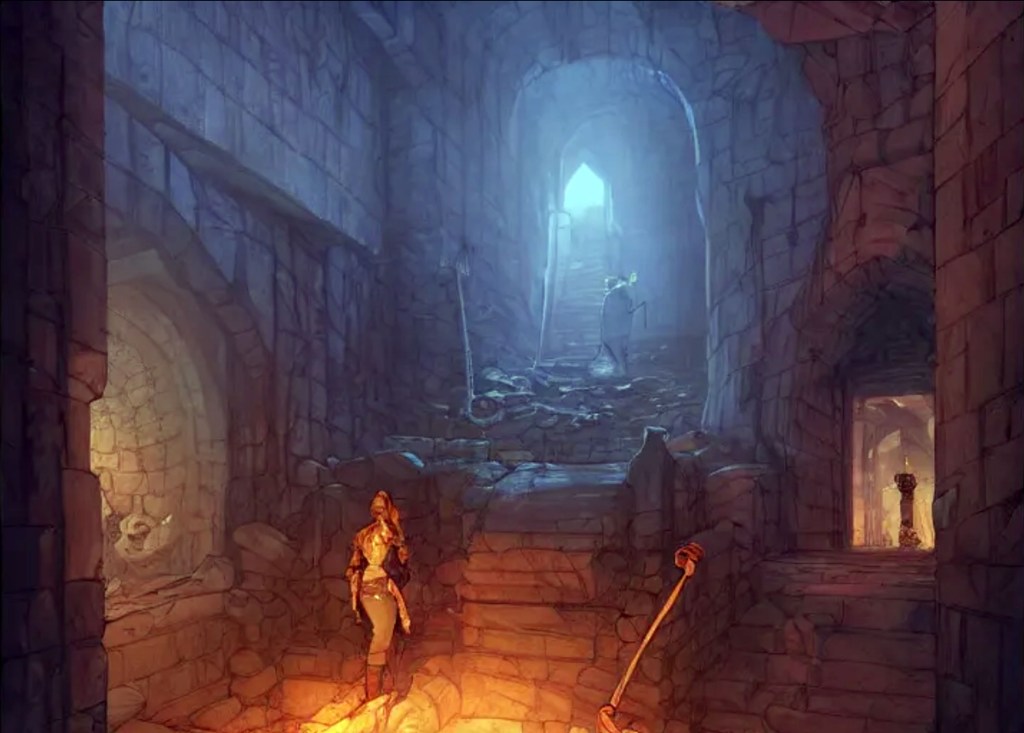

If the players try to map their progress, they’ll find the map doesn’t make sense without assuming magical travel. They’ll likely figure out they’re in a loop and start looking for ways out.
The solution may be as simple as finding the one room they haven’t been to yet (that is, they have to visit every room at least once before an exit becomes available). Or they may need to note clues in each room that add up to a hint about what action they need to take to appease the spirits and gain an exit. (Lay down your arms, drop a coin in each room, etc.)
Or maybe only room 6 has a door that goes to room 4, and room 4 has one door that is the exit, one that hides a hungry lion, and one that hides a treasure.
The Water Chamber
The heroes find the treasure room at last, but, when they move the gold idol, a waterproof iron gate slams closed over the doorway, and the room begins to fill with seawater thru holes in the ceiling. The heroes can stop the water by returning the idol to its rightful place, but they won’t be able to drain the water nor even budge the gate without a great deal of difficulty.
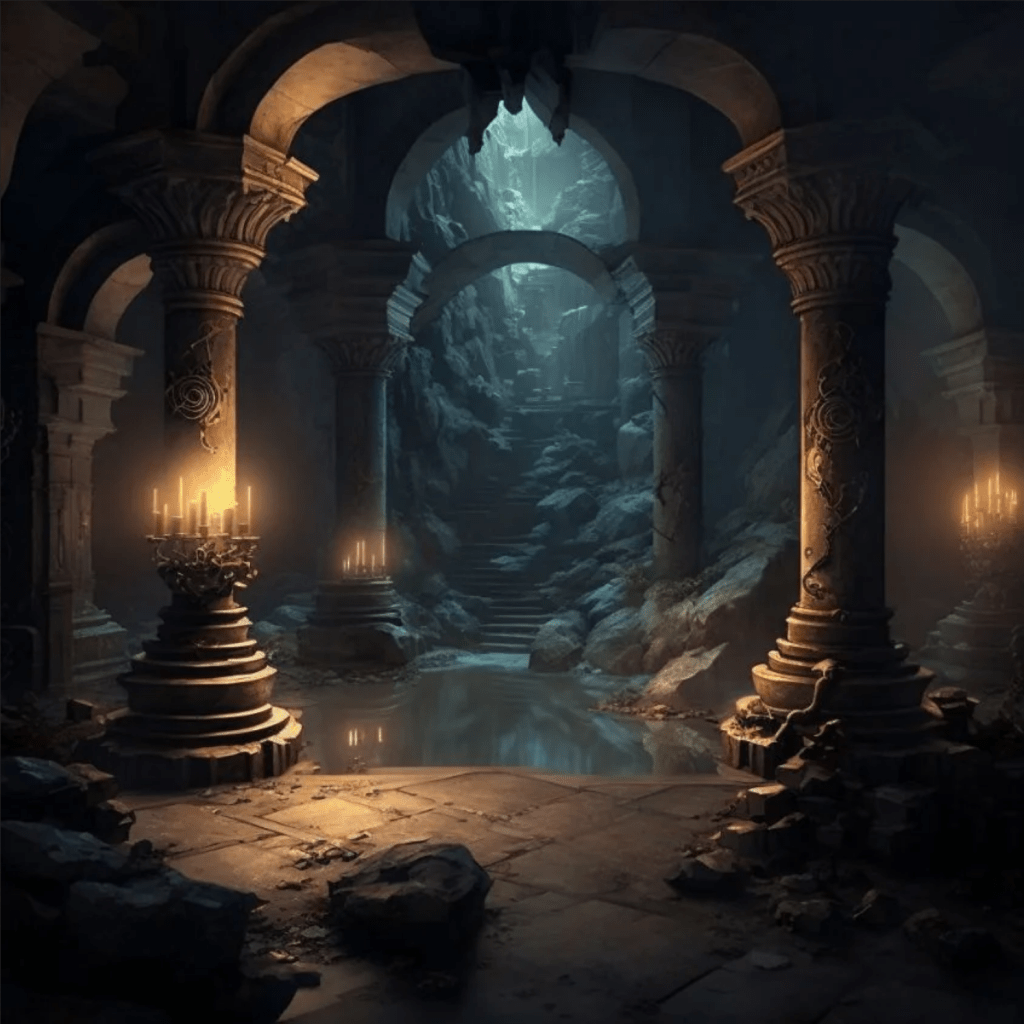
Instead, they can remove their heavy armor and packs and float to the ceiling as the water rises, where they can escape thru a trap door. If they’re clever, the heroes might tie a rope to their armor and packs–and the idol–and pull them up after they exit the room.
Don’t worry if the players figure out some other method of defeating the puzzle than the one you planned. That’s the nature of such things, and their lateral thinking (or dedication to brute force) should be rewarded.
The Demon Portal
The heroes enter a chamber to find a portal in the form of a small cauldron, crystal ball, fiery brazier, or similar object. Out of the portal comes a monster, such as a demon, which attacks them. Then, another. Each time they defeat a monster, another appears from the portal. The challenge then becomes how to shut down the portal.

Perhaps the heroes must open a chest and put the portal object inside, but the chest is locked, so it must be picked first–in the middle of combat. Perhaps they must destroy the portal by smashing it, but that causes it to explode for a great deal of damage. Or perhaps they need only cover it with a gossamer handkerchief they were told by Lilianith, the elven oracle, “will help you defeat even a thousand demons”. (I like to think of such characters as getting divine visions that even they don’t fully understand, so their clues must be cryptic by necessity.)
The Trap That Helps
In the course of exploring a dungeon, the heroes come upon a trap that teleports them some distance away into the forest. Perhaps it only affects one or two of them, separating the party, and it’s a great relief when they find their way back in and catch up.
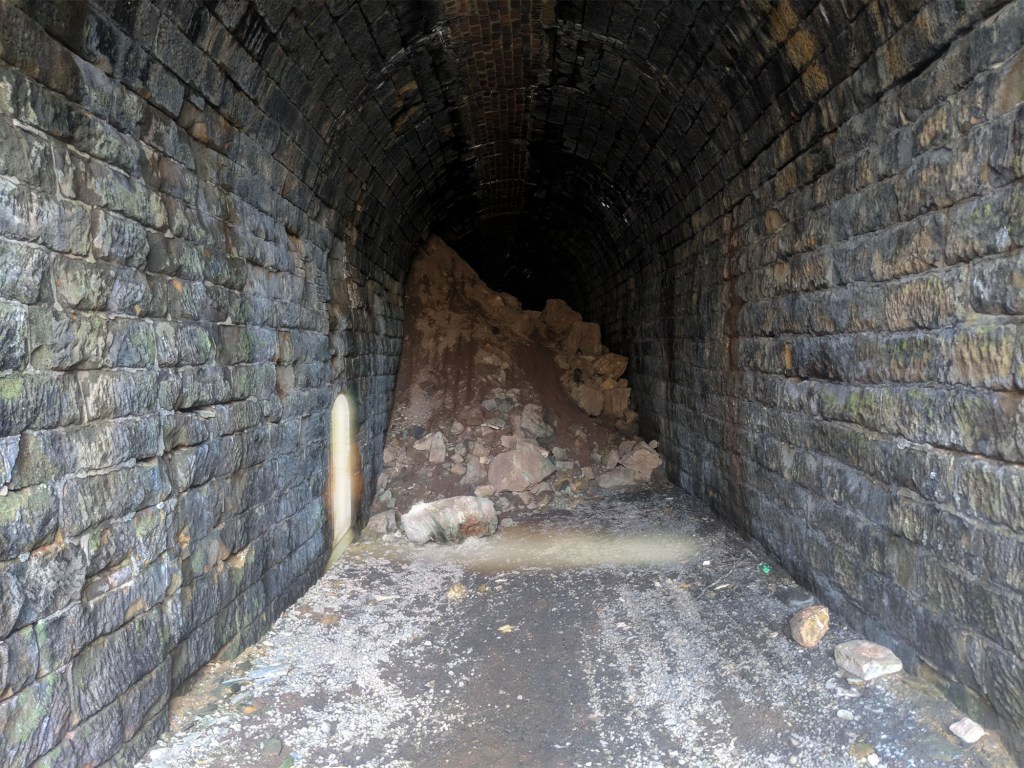
Once the heroes discover the treasure, removing it starts a cave-in that gradually progresses thru the complex. They need to act fast to escape before the entire complex collapses, and their best way out is to use the portal trap and teleport out to the forest. Perhaps the cave-in starts elsewhere, and the entrance only caves in when they get near it (with a series of dramatic dice rolls), but they can still get to the portal.
Fidget Puzzles
Some puzzles can actually just be a bit of busywork or trial-and-error and still be fun. This is because the players are not solving the puzzle for fun; they are trying to solve it so they can get to the treasure or escape.
- The heroes need to gather the pieces of a broken statue and reassemble it in order for some effect to work, and they figure it out because there is a mural on the wall depicting the effect centered on the intact statue.
- They’ve learned they need to make a blood sacrifice on the altar–literally just dripping as little as a single drop of blood of any kind (or specifically from an elf or whatever). Then the door opens or other magic activates.
- They need to turn the large gears on an iron door but they need to turn them in a certain order or a certain direction that they can determine by trial-and-error.
- There are several niches in the wall to set lanterns and a proverb carved on the wall that says, “And each shall bear a lamp to show the way.” Setting a light source in each of them is the solution and activates the room’s purpose.
- They have a set of keys–iron, silver, brass, and copper–and need to open doors with iron, silver, brass, and copper locks. The keys and locks are simply paired. Of course, maybe they had to find each of the keys first (perhaps on the bodies of the evil cultists they fought).

Little puzzles like these keep things lively without being too frustrating or taxing during a long gaming session, especially if the heroes are under time pressure. It also makes players feel smart and capable that they get it quickly and know what they need to do.
What Not to Do
- Vague or annoying puzzles are no fun.
- A puzzle that requires certain objects to be moved or used in a certain way but with no indication of which or how can be frustrating. Trial-and-error is both tedious and offers no sense of accomplishment when success if finally achieved.
- Puzzles that don’t indicate progress, show signs of wear, or offer an obvious method (such as dials to turn, buttons to push, a cryptic instruction) are often baffling.
- Creative solutions that don’t work for some technical reason are disheartening.
- Puzzles that seem to exist just for the purpose of the game can seem hokey. Try to fit them to the theme of the adventure (nature puzzles set up by druids; stone puzzles set up by dwarves, etc.).
Things to Keep in Mind
- Even rather simple puzzles become difficult when you’re under pressure. It’s actually more fun if the solution kind of presents itself as almost-but-not-quite obvious, and the players gradually catch on. The first one to get it gets the credit for being clever, no matter if it only took seconds.
- Riddles aren’t good puzzles, because they are meant not to be guessed. They’re meant to make sense after you learn the answer and show off how clever the riddler is. But simple ones can be a fun part of a larger puzzle. If the answer is “a fish”, and one of the puzzle pieces is a fish, the pieces act as multiple choice; if the chamber is decorated with depictions of fish, every time you mention the surroundings is a hint.
- A well-designed puzzle often suggests a simple solution (perhaps one that has worked before), but it doesn’t work. Instead, the heroes are forced to think just a little more. The obvious-but-wrong solution acts has a kind of hint: “Obviously, we need to get both doors opened at the same time, but opening one closes the other, so…”.
- Puzzles are typically made to be easy for the puzzle-maker to bypass. The solution shouldn’t be laborious unless the puzzle-maker meant for the location to never be penetrated. (But then why make it a puzzle?)
- Avoid puzzles that require knowledge the heroes have to make a knowledge check for. Indeed, hinging success strictly on making a skill or ability check of any kind is just inviting disaster.
- Avoid puzzles that require real-world knowledge, such as light or paint color mixing and chemistry. The PCs wouldn’t have that knowledge, and the players will feel cheated if they don’t happen to know that table salt is sodium chloride.
- Make sure you have an out, so that the heroes aren’t trapped forever (or automatically killed or even just frustrated into giving up and leaving) if they can’t figure out the solution. There might be both an easy way and a hard and laborious way to get at the treasure and/or escape. The beauty of role-playing games is that there aren’t hard and fast rules to follow to accomplish something.
Bonus
Trying to guess this pattern and sequence would be impossible and boring, but trying to remember it after seeing a guard do it once could be an interesting challenge, assuming you manage to steal the keys later….


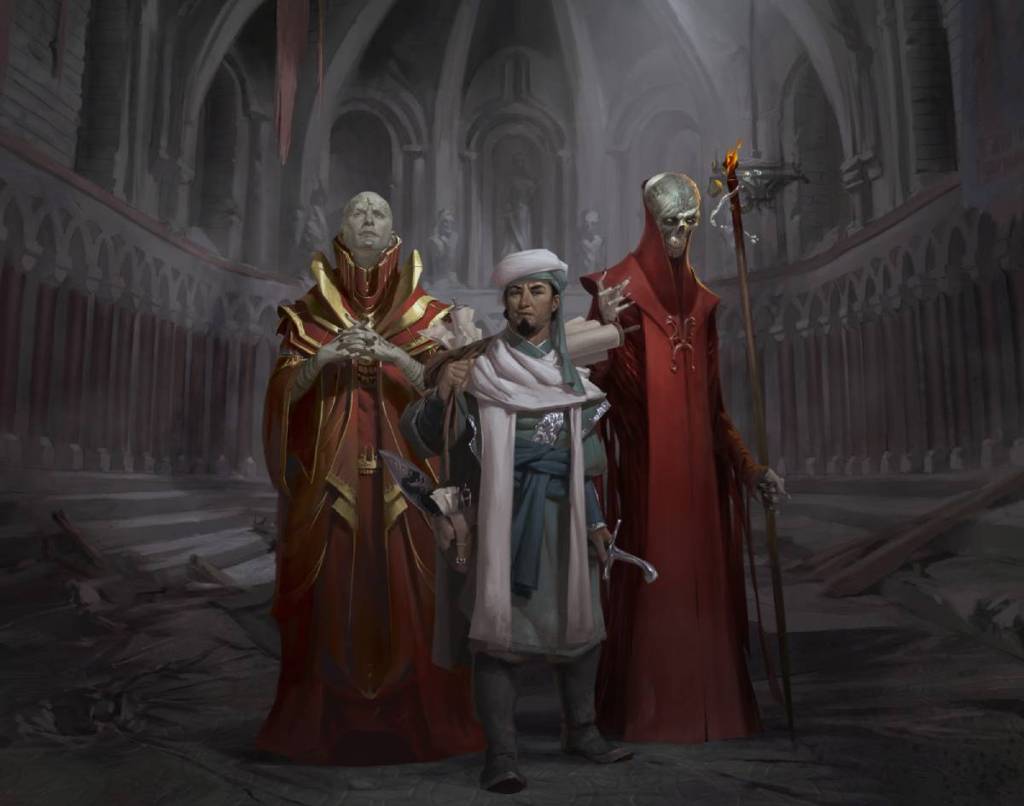
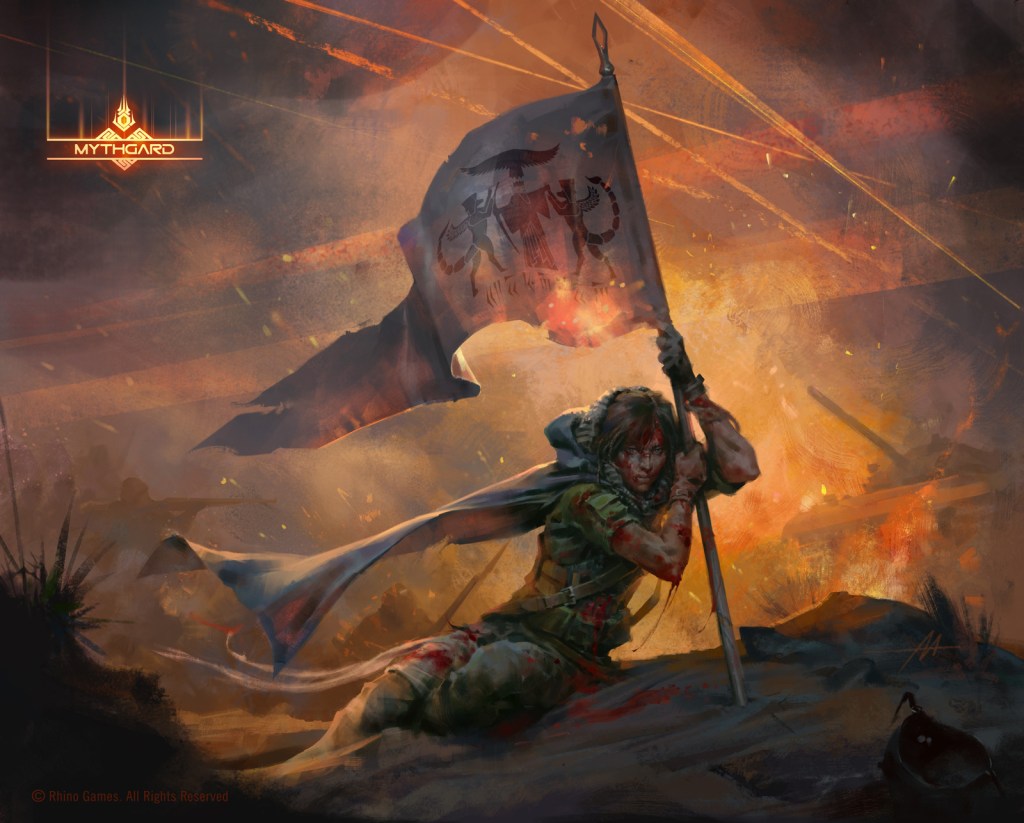

Leave a comment